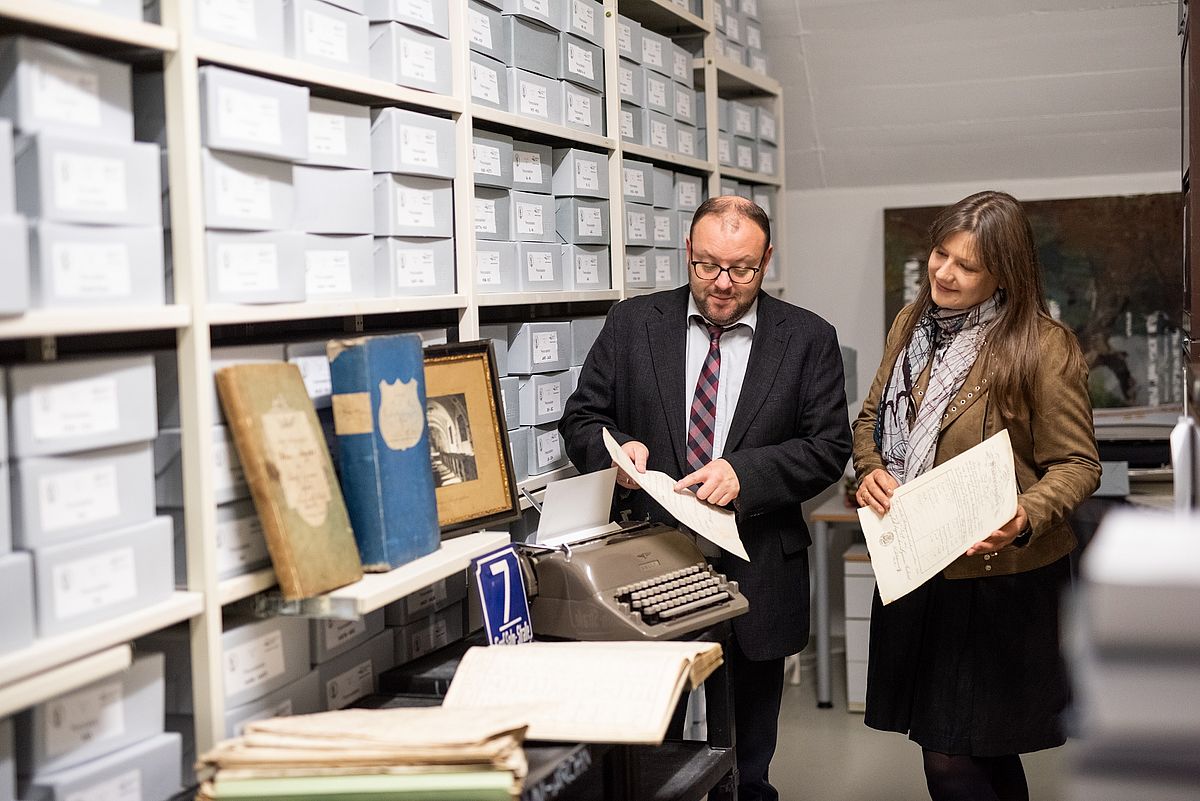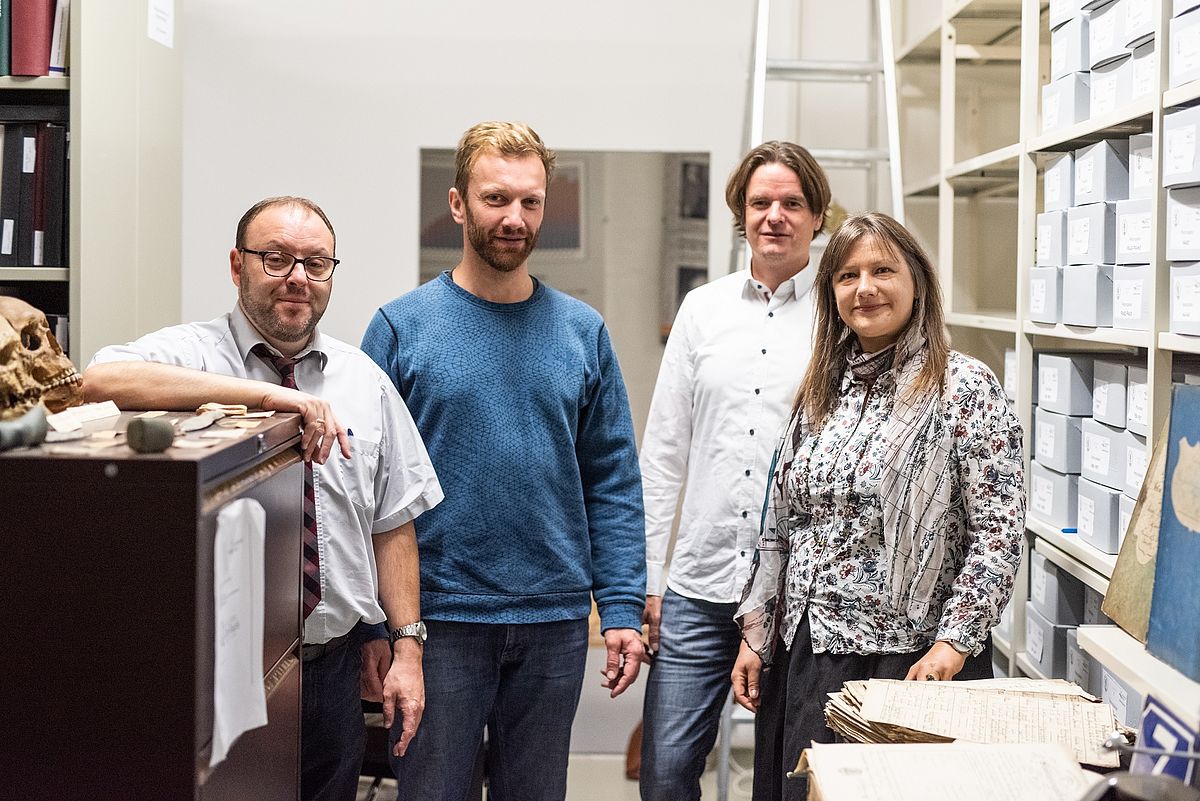We can no longer question witnesses of the time, but there are other testimonies from back then that bring us closer to the past.
A student on her work with the Digital University Museum
For example, matriculation books, registers of grades, semestral certificates. Today's students used these documents to trace the life of Paul Esterl, who enrolled 185 years ago in Passau to study theology. The findings are now available online, as are the digital copies of the original sources.
These and other stories from the history of the University of Passau can be found in the Digital University Museum, which was created as part of a teaching project with sources from the university archive. "We have provided the students with the necessary tools for both historical source work and the digital indexing of these sources," says Prof. Dr. Malte Rehbein, holder of the Chair of Digital Humanities, who initiated the project together with university archivist Mario Puhane two and a half years ago. The Digital University Museum was curated by Dr. Andrea Schilz, who also managed the implementation with the students. Sebastian Gassner optimised the internet presence with regard to information technology. The platform, which is being put online for the 40th anniversary of the university, contains the work of five semesters and eleven courses.
Today's university is only celebrating its 40th anniversary this year. But the university tradition in Passau dates back to the 17th century: to a prince-bishop who wanted to counteract reformatory efforts with the help of a Jesuit college. The Digital University Museum, however, does not present the complete history, it shows specifically prepared excerpts. Only a small fraction of the documents actually available at the university are stored digitally in the database. Puhane estimates that less than one percent is digitally captured and accessible online.
The oldest digital copy is from 1786, the most recent from 2018
But Puhane says there are real gems among them. One of the oldest digital copies is the secularisation list from 1803 – a very special document for archivists.
The list provides complete information about the existence of a university building at the end of the 18th century, in the specific case concerning the predecessor building of today's catholic theology building at Michaeligasse 13. The most recent document in the University Museum dates from the anniversary year 2018: a screenshot of the university homepage.
Students across faculties involved
What was special about the project was that a total of 42 students took part across faculties. Students came from the Bachelor's programmes European Studies (Major), Historical Cultural Studies, Internet Computing, Media and Communication as well as Linguistics and Textual Studies and from the Master's programmes European Studies and History. The courses combined historical source work with the methods of Digital Humanities. This means that the students learned how to prepare these sources as digital data so that they can be further digitally processed.

University archivist Mario Puhane and curator Dr. Andrea Schilz sift through the original sources of Paul Esterl's student life.
Digital copies are more than the scanned version of a document or just a beautiful excerpt. They must reproduce the original document completely, including colour matching. In addition, there are further points such as the recording of metadata. The students processed the digital copies in accordance with the specifications of the German Research Foundation (DFG) so that the depot available in the University Museum can also be used for computer-based processes.
Interactive map of student life in the 19th century
In addition, students were charged with the task of making selected digital copies accessible to a wider public. Under guidance, the students designed online exhibitions and considered suitable formats, such as an interactive map showing where students lived in Passau in the 19th century; mainly in the old town and the city centre, some also in a kind of student flatshare.
Paul Esterl himself must have lodged with a grocer's widow: "He lived there, so to speak, 'within walking distance of the university', at the address 'Ort 64' in Klosterwinkel. The widow of a court clerk, Mrs. Dickhart, may have provided him with warm meals," says the University Museum's website.
The life of Paul Esterl
Esterl embarked on a classic career after studying theology in Passau in the 19th century: he became a pastor, which according to the University Museum's website was: "A profession that could also help men from less rich and educated backgrounds gain a certain social standing, a job that required no heavy physical work and could help provide a steady income."


